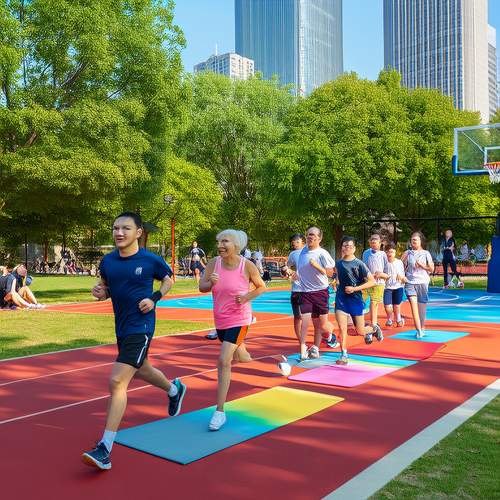Setting fitness goals is the cornerstone of any successful training regimen. Whether you're a seasoned athlete or just starting your fitness journey, having clear objectives can make all the difference. Goals provide direction, motivation, and a measurable way to track progress. Without them, it's easy to lose focus and fall into the trap of aimless workouts that yield little to no results.
The importance of specificity cannot be overstated when it comes to goal setting. Vague aspirations like "getting fit" or "losing weight" lack the clarity needed to create an actionable plan. Instead, well-defined targets such as "running a 5K in under 25 minutes" or "adding 20 pounds to your bench press" give you something concrete to work toward. These specific goals allow for better planning and make it easier to celebrate milestones along the way.
Understanding your why is equally crucial. The reasons behind your fitness goals will serve as your anchor when motivation wanes. Perhaps you want to improve your health to keep up with your kids, or maybe you're training for a competition. Whatever the case, connecting your goals to deeper personal values ensures they remain meaningful over time. This emotional investment can be the difference between sticking with your program and abandoning it when the going gets tough.
Realistic goal setting requires honest self-assessment. Many enthusiasts make the mistake of setting overly ambitious targets without considering their current fitness level, schedule constraints, or physical limitations. While ambition is admirable, unrealistic goals often lead to frustration and burnout. It's better to start with modest objectives that can be gradually increased as you build strength, endurance, and confidence.
The timeline of your goals matters significantly. Short-term goals provide immediate targets to hit, creating a sense of accomplishment that fuels continued effort. Medium-term goals bridge the gap between your current abilities and long-term aspirations. And those big, ambitious long-term goals? They give your training purpose and vision. A balanced approach incorporates all three time horizons to maintain steady progress without becoming overwhelmed.
Tracking mechanisms transform abstract goals into tangible results. Whether you prefer a workout journal, fitness app, or simple spreadsheet, documenting your progress serves multiple purposes. It provides accountability, helps identify patterns (both positive and negative), and creates a record of your journey that can be incredibly motivating to review during challenging periods. The act of recording your efforts makes your commitment more concrete.
Adaptability is perhaps the most underrated aspect of goal setting. Life happens - injuries occur, schedules change, and priorities shift. Rigidly clinging to initial goals when circumstances have changed often does more harm than good. Learning to modify your objectives while maintaining overall direction is a skill that separates temporary exercisers from lifelong fitness enthusiasts. This flexibility prevents discouragement when facing inevitable setbacks.
The social dimension of goal setting shouldn't be ignored. Sharing your objectives with a workout partner, coach, or supportive community creates external accountability that can bolster your internal motivation. Friendly competition, shared experiences, and the simple act of verbalizing your intentions all contribute to increased commitment. Just be selective about who you share with - surrounding yourself with positive influences makes a noticeable difference.
Periodic evaluation ensures your goals remain relevant and challenging. What seemed important six months ago might need adjustment based on your evolving fitness level, interests, or lifestyle. Regular check-ins allow you to celebrate achievements, learn from shortcomings, and recalibrate as needed. This reflective practice keeps your training fresh and aligned with your current priorities.
Ultimately, the most effective fitness goals are those that strike a balance between challenge and attainability. They should push you outside your comfort zone without being so daunting that they provoke anxiety or seem impossible. When crafted thoughtfully, these objectives become powerful tools for transformation that extend far beyond physical changes, fostering discipline, resilience, and self-knowledge that permeate all areas of life.

By /May 21, 2025

By /May 21, 2025

By /May 21, 2025

By /May 21, 2025

By /May 21, 2025

By /May 21, 2025

By /May 21, 2025

By /May 21, 2025

By /May 21, 2025

By /May 21, 2025

By /May 21, 2025

By /May 21, 2025

By /May 21, 2025

By /May 21, 2025

By /May 21, 2025

By /May 21, 2025

By /May 21, 2025

By /May 21, 2025

By /May 21, 2025

By /May 21, 2025